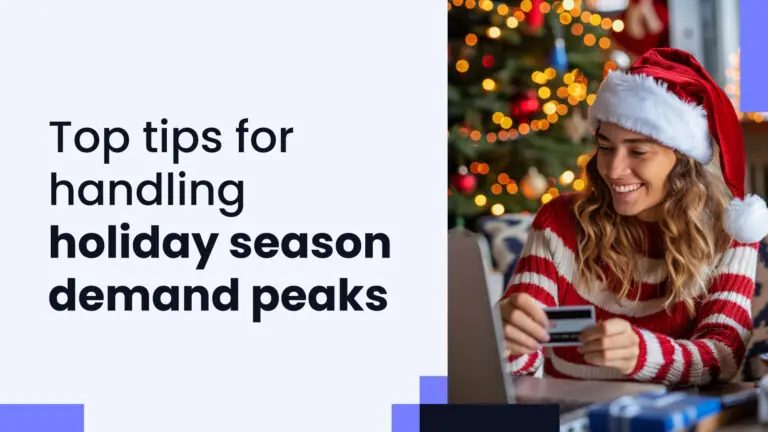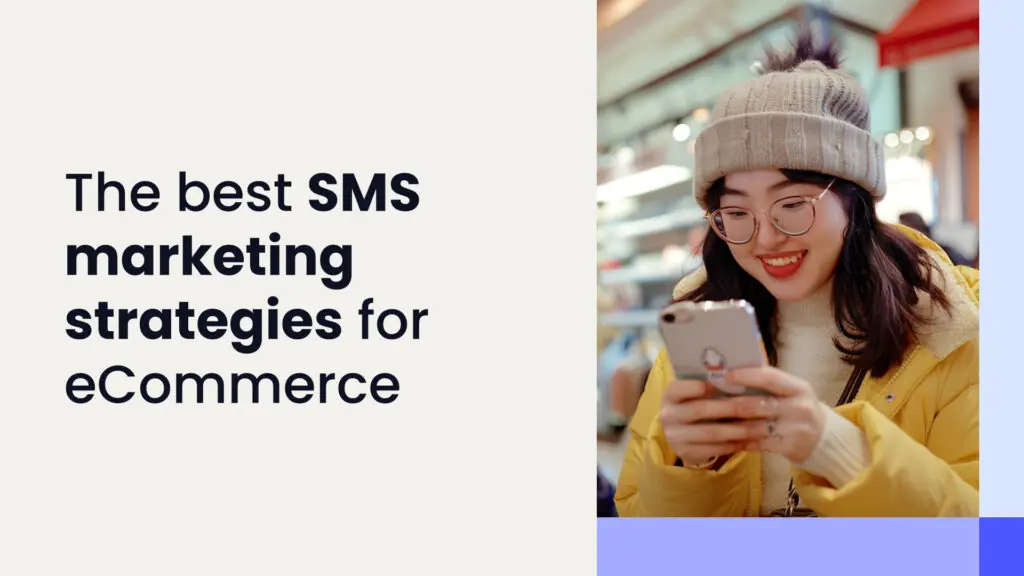*This article was written by Philip Portman, founder and CEO of Textdrip.
Did you know that nearly 98% of SMS messages are opened? That’s far higher than any other digital marketing channel. That statistic alone shows the immense potential of SMS for eCommerce, and it’s definitely something to consider if you haven’t already.
In this article, we’ll explore some of the most effective SMS strategies and campaigns used for eCommerce.
SMS (Short Message Service) marketing is a form of digital tool that uses text messages to send promotional messages to customers. It’s a direct and personal way to reach your audience, often leading to higher engagement and conversion rates than other marketing channels (like websites, social media, and email marketing, among others).
Think of it like having a personal assistant who always has your phone number and knows exactly when to send you the right message. Whether it’s a flash sale, a new product launch, or a shipping update – SMS marketing allows you to connect with your customers in real time.
In eCommerce, capturing customers’ attention quickly is crucial; SMS has the power to achieve this, making it an ideal tool for the industry. Here are some reasons that support this claim:
Every industry has unique products, services, and target audiences, which influence the effectiveness of different campaigns. Similarly, eCommerce businesses can benefit from several common types of SMS campaigns which are outlined below:
Subscribe to the eCommerce newsletter for
top industry insights
After discovering a new tech retailer that he liked, John decided to subscribe to the store’s website. Before he even made a purchase, he received the following SMS message:
“Hey John, welcome to [store’s name]! We’re so happy you’re here with us. Check out our selection and enjoy a 10% discount on your first purchase here: [link]”
John had been researching laptops for weeks. He needed a new one for work and school, and he wanted something powerful yet affordable. After careful consideration, he decided on a sleek, modern model from his new favorite tech retailer.
Once he completed the purchase, John received a confirmation SMS immediately. It thanked him for his order and provided his order number.
“Thank you for your purchase! Your order number is #12345. Enjoy your new laptop! Check out our recommended accessories for a complete setup: [link]”
A few days later, he received another SMS with personalized product recommendations based on his recent purchase. The message suggested a laptop case and a wireless mouse to complement his new device.
“We’re excited to have you as a customer! Enjoy your 15% discount on your next purchase. Browse our latest collection here: [link].”
Feeling satisfied with his purchase, John decided to browse the retailer’s website again. As he explored their offerings, he noticed a pre-purchase offer for a new line of headphones. Knowing he’d likely need new headphones soon, and that this next purchase is 15% off, John eagerly made the purchase.
Pre-purchase:
Post-purchase:
Maria had been shopping online for a new dress to wear to a wedding. She found the perfect one – a flowy, floral number that was both elegant and comfortable. She added it to her cart and started to check out, but then she hesitated. The price was a bit higher than she’d planned to spend.
Maria decided to think about it for a few days. Unfortunately, she forgot about the dress. A few days later, she received a reminder SMS from the online store. The message gently reminded her about the dress in her cart, and a follow-up message offered a limited time discount to encourage her to complete her purchase.
“We noticed you left an item in your cart. Is there anything we can help you with? Reply ‘YES’ to chat with our customer service.”
“Don’t miss out on your favorite dress! Your cart is still waiting for you. Get 10% off your purchase when you check out now. [Link]”
Feeling silly for forgetting, Maria decided to take advantage of the discount. She quickly returned to the website, added the dress to her cart again, and completed the checkout process. She was excited to receive the dress and wear it to the wedding.
Alex was a tech enthusiast who eagerly followed the latest trends in smartphones. He had been waiting for months for a new flagship model from his favorite brand to be released. When the announcement finally came, Alex was thrilled.
A few days before the launch, he received a teaser SMS from the brand, hinting at the exciting new features and innovations that the smartphone would offer. The message created a sense of anticipation and excitement.
“Get ready for the future! Our new smartphone is launching soon. Sign up for early access and be the first to know: [link]”
On the day of the launch, Alex eagerly opened his phone to see the official announcement. The brand had sent a launch SMS with a detailed product description and high-quality images. Alex was impressed by the sleek design, powerful camera, and advanced features. He knew he had to have it.
“Introducing the all-new [product name]. Pre-order now and get a free [gift]: [link]”
As soon as pre-orders were available, Alex quickly placed his order. He couldn’t wait to get his hands on the new smartphone and experience all it had to offer.
Might also interest you:
Sarah was planning a vacation to the beach and was looking for a new swimsuit. She had been browsing online for weeks but hadn’t found anything she really loved. Then, she received a promotional SMS from her favorite swimwear brand.
The SMS advertised a seasonal sale with discounts of up to 50% on all swimwear. Sarah was excited to see the offer and immediately clicked on the link. She found several swimsuits that she liked and decided to purchase two.
“Get this – your favorite swimwear designs, now at 50% OFF. Happy swimming! View all: [link]”
With the discounted prices, Sarah was able to save a significant amount of money on her new swimwear. She was looking forward to wearing her new suits on her upcoming vacation.
David was considering buying a new laptop but was unsure about the specific model to choose. He had visited a few electronics stores and read online reviews, but still had some questions.
To get more information, David sent a text message to the customer service department of the online retailer he was interested in. He asked about the differences between two specific models and inquired about their availability:
“Hey [tech store],
I’m interested in purchasing a new laptop and am considering the [model A] and [model B]. I’m having trouble deciding between the two and would appreciate your input.”
To his surprise, he received a prompt response from a customer service representative. The representative answered all of David’s questions and even offered to send him a detailed comparison chart. Satisfied with the information, David decided to purchase the laptop from the retailer.
“Hi David,
Thank you for your message. Here’s a detailed comparison chart highlighting the key differences between the two models: [Link]”
As a loyal customer of a high-end fashion brand, Emily had been shopping there for years. She had built a strong relationship with the store’s staff and was always impressed by their personalized service.
One day, Emily received an exclusive SMS inviting her to join the brand’s new VIP program. The program offered a variety of benefits, including early access to sales, personalized styling advice, and invitations to exclusive events:
“As a valued VIP member, you’re invited to our exclusive sale. Enjoy 25% off your entire purchase – [link]”
Excited to become a VIP member, Emily signed up for the program. She immediately began to enjoy the perks. She was able to shop during private sales, received personalized recommendations from her favorite stylist, and was invited to a fashion show featuring the brand’s latest collection.
“Emily, thank you for your continued loyalty! As a VIP, you’re eligible for complimentary alterations on your latest purchase: [link]”
Emily felt valued and appreciated as a VIP member. She knew that the brand recognized her loyalty and was committed to providing her with the best possible shopping experience.
Sarah was shopping for new clothes for her upcoming vacation. She had found a few items she liked at her favorite clothing store but was hesitant to spend too much money.
As she was about to check out, she noticed a sign advertising a BOGO deal on all shirts. Excited about the opportunity to save money, Sarah decided to purchase two shirts she had been eyeing.
״Buy one shirt, get one free! Mix and match your favorites. Offer ends [date]: [link]”
With the BOGO deal, Sarah was able to get two shirts for the price of one. She was thrilled with her purchase and looked forward to wearing her new shirts on her vacation. It also made her realize that she should open these messages more often, because there was a good chance for a deal she otherwise would not have known about.
Alex was looking for a new smartphone. He had been researching different models for weeks but hadn’t made a decision yet.
While browsing online, Alex received an SMS from one of his favorite electronics retailers. The message advertised a limited time offer on a popular smartphone model. The offer included a free case and screen protector with the purchase.
“Only a few hours left to save! Get 20% off your entire purchase. Use code HURRY before it’s gone: [link]”
Feeling a sense of FOMO, Alex quickly visited the retailer’s website. He saw that the offer was indeed limited and only available for a few more days. Knowing he might not get another chance to purchase the smartphone at such a good price, Alex decided to place his order, as he was pretty much certain he would get that model even if it wasn’t part of such a good deal.
In a nutshell, we’ve explored a variety of SMS campaigns that serve as powerful tools for eCommerce businesses to connect with customers, increase sales, and foster loyalty. These campaigns, when executed effectively, can significantly boost revenue and return on investment (ROI).
Happy texting! As you start crafting your SMS strategies and boosting engagement, don’t forget that scaling your eCommerce business requires more than just smart marketing – it also demands financial agility. With 8fig’s innovative funding solutions and accompanying AI-based tools, you can ensure that your business has the resources it needs to grow without limits.
Ready to take your store to the next level? Get started with 8fig today and unlock the potential of personalized, just-in-time funding tailored to your goals.
Have article ideas, requests, or collaboration proposals? Reach out to us at editor@8fig.co – we’d love to hear from you.
Subscribe to the eCommerce newsletter for
top industry insights

Stuck with extra inventory after Amazon’s Spring Sale? Learn five smart strategies to clear unsold stock, boost cash flow, and avoid future overstocks with smarter inventory planning.
![BFCM: The ultimate guide to eCommerce sales [2025]](https://www.8fig.co/wp-content/uploads/2023/09/cover-2-768x432.jpg.webp)
Get ready for Black Friday and Cyber Monday with our guide on maximizing sales through smart inventory management, effective marketing strategies, and leveraging eCommerce financing.

The holiday rush brings with it many challenges for eCommerce sellers. Get ahead of the competition with these top tips.
